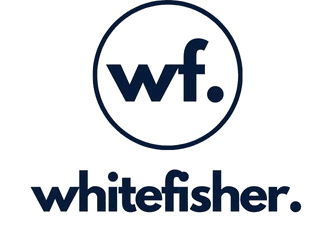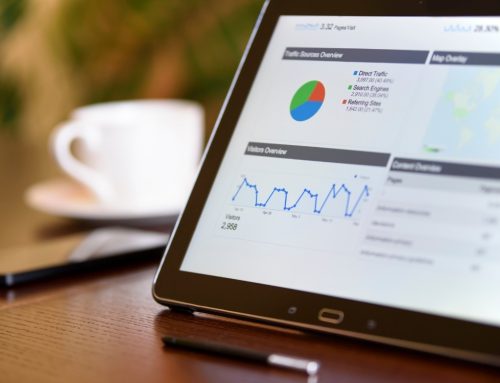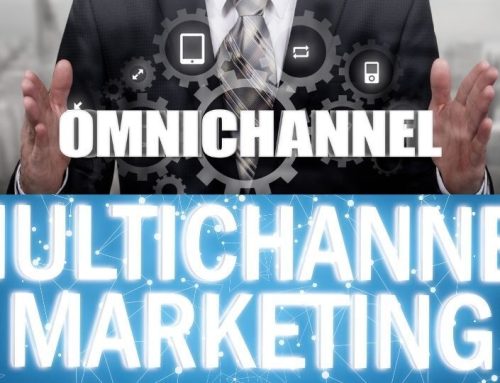In today’s competitive digital marketplace, visibility is everything — but not just any visibility. For small businesses, success often depends on being seen by the right audience, in the right place, at the right time. This is where hyperlocal SEO becomes indispensable.
Unlike traditional SEO, which targets broad search intent or large geographic areas, hyperlocal SEO focuses on ultra-specific locations — even down to streets, neighbourhoods, or postal codes. It’s the art and science of helping your business show up when nearby customers search for your services.
For example, when someone searches “coffee shop near me” or “plumber in Islington”, hyperlocal SEO ensures that your business appears prominently in those results, including Google Maps, Google Business Profile, and local directories. This precise targeting translates to higher conversions, more foot traffic, and stronger community recognition.
At Smart Digitants, we help small and medium-sized businesses harness hyperlocal SEO strategies to dominate their local market and turn searchers into loyal customers. But to fully understand its potential, we must first explore what hyperlocal SEO really entails, why it matters, and how you can use it to grow sustainably.
What Is Hyperlocal SEO and How Does It Differ from Traditional SEO?
To understand how hyperlocal SEO can fuel small business growth, it’s crucial to distinguish it from general or traditional SEO strategies.
1. Definition and Core Focus
Hyperlocal SEO is a digital marketing approach that focuses on optimising your business visibility for search queries made within a narrowly defined area — typically within a few miles or even a specific street. The idea is to help your business appear in search results exactly when someone nearby is looking for your products or services.
Traditional SEO, on the other hand, aims to build a broad online presence for national or international visibility. It’s great for large companies or eCommerce platforms that serve customers regardless of geography. But for small businesses that rely on local clients — such as cafés, salons, tradespeople, clinics, or law firms — hyperlocal SEO delivers far greater value.
2. The Proximity Principle
Google’s algorithm increasingly prioritises proximity when displaying results for local intent searches. When users type “near me,” the search engine automatically detects their location and filters results based on distance, relevance, and prominence.
Hyperlocal SEO leverages this proximity factor by optimising your website, Google Business Profile, and local citations to ensure your business appears at the top of those geo-specific search results.
3. Personalisation and Intent Recognition
Hyperlocal SEO also benefits from Google’s growing focus on context and intent. Instead of just matching keywords, the search engine interprets what users truly mean. For example:
- A search for “best dentist near Oxford Street” triggers local listings and reviews from that area.
- “Emergency electrician in Camden Town” prompts nearby results with immediate availability.
Through hyperlocal SEO, businesses align their digital presence to capture this intent precisely, ensuring that customers ready to purchase find them first.
4. Real-World Example
Imagine two florists — one targeting “London florist” and the other focusing on “florist in Shoreditch.” The second business uses hyperlocal SEO by narrowing its content, metadata, and listings to a specific district. As a result, it appears in search results for people within that immediate area, gaining foot traffic and enquiries from real, local customers rather than generic online visitors.
5. Why It Matters for Small Businesses
For small enterprises with limited marketing budgets, competing on a national level can be both expensive and inefficient. Hyperlocal SEO provides a more cost-effective and results-driven approach — one that delivers measurable impact by reaching nearby customers actively seeking your service.
In essence, hyperlocal SEO bridges the gap between online visibility and real-world sales, making it one of the most strategic tools for local growth in 2025 and beyond.
Why Hyperlocal SEO Is Essential for Small Businesses in 2025
The evolution of search behaviour in the past decade has completely changed how consumers discover and interact with businesses. With mobile devices, AI assistants, and location-based algorithms leading the way, hyperlocal SEO has become not just a marketing option—but a necessity for small businesses aiming to survive and thrive in their communities.
The Rise of Mobile and “Near Me” Searches
More than 80% of consumers now use their smartphones to search for nearby services before making a purchase decision. Search phrases such as “near me,” “open now,” and “best [service] in [area]” have grown exponentially.
Google’s algorithm updates, such as the Vicinity Update, further emphasise proximity and relevance. This means that businesses optimised for hyperlocal SEO are far more likely to appear at the top of mobile search results and Google Maps listings, right when customers are ready to buy.
For example, a small bakery in Bristol using targeted hyperlocal keywords, optimised business listings, and local backlinks can consistently outperform a national brand with generic SEO efforts when someone searches “fresh croissants near me.”
Increased Relevance and Conversion Rates
When users conduct hyperlocal searches, they usually have immediate intent — they’re looking to make a purchase, book a service, or visit a location. This makes hyperlocal SEO a conversion-focused strategy.
Because the audience is local and actively searching for a specific solution, conversion rates are significantly higher compared to general SEO or paid ads with broader targeting. It helps ensure that marketing spend translates directly into foot traffic and local revenue.
Leveraging Voice Search and AI Assistants
Voice search has also contributed to the surge of hyperlocal SEO relevance. Devices like Siri, Alexa, and Google Assistant process millions of local voice queries daily — often phrased conversationally, like “Where’s the nearest car wash?” or “Find a plumber in Manchester.”
Optimising content for hyperlocal SEO ensures that your business information, services, and directions are accurately retrieved and presented by these smart assistants.
Local Reviews and Trust Signals
Today, trust is currency. Online reviews and ratings play an enormous role in influencing customer decisions. According to BrightLocal’s 2024 survey, 87% of consumers read online reviews for local businesses before engaging.
Hyperlocal SEO ties directly into this behaviour by ensuring your reviews are visible where they matter most — Google Maps, Facebook, and local directories. It’s not just about appearing first in search; it’s about appearing credible, authentic, and close by.
Competitive Edge in a Saturated Market
Many small businesses underestimate how powerful hyperlocal SEO can be. While large corporations dominate broad search terms, few invest the time to fine-tune local search presence for every community. This opens a valuable opportunity for small businesses to capture their own micro-markets and become the local authority in their niche.
Through structured local content, NAP consistency (Name, Address, Phone Number), and community-based engagement, even the smallest business can compete with industry giants within its local catchment area
Core Components of an Effective Hyperlocal SEO Strategy

Implementing hyperlocal SEO successfully requires precision, consistency, and a deep understanding of how local search algorithms work. Unlike traditional SEO, which prioritises broad relevance and backlinks, hyperlocal SEO thrives on location-based signals, proximity indicators, and real-world engagement.
Below are the essential components of a strong hyperlocal SEO strategy that can help small businesses gain a dominant local presence.
1. Google Business Profile Optimisation
The foundation of any hyperlocal SEO campaign starts with your Google Business Profile (GBP) — previously known as Google My Business.
This profile acts as your business’s local identity, showing up across Google Search and Google Maps whenever someone nearby searches for your services.
To optimise your GBP effectively:
- Complete every section, including an accurate Name, Address, and Phone Number (NAP).
- Choose precise business categories and subcategories.
- Upload high-quality photos and videos of your premises or work.
- Add service areas, operating hours, and website links.
- Post regular updates, offers, or events to show Google your business is active.
When fully optimised, your GBP acts like a digital storefront that boosts your visibility in local pack results — the top three listings displayed for location-based searches.
2. Local Keyword Mapping
Unlike traditional keyword research that focuses on search volume, hyperlocal SEO keyword targeting prioritises proximity and specificity.
For example, instead of “best accountant,” use “best accountant in Leeds” or “tax consultant near Park Row Leeds.”
Tools like Google Keyword Planner, Ahrefs, and Semrush can help identify regional terms that people are actually using.
Tips for effective keyword mapping:
- Create dedicated landing pages for each location you serve.
- Include local modifiers such as town names, landmarks, and postal codes.
- Incorporate conversational phrases that match how people speak, especially for voice search.
- Use structured data markup to signal your location to search engines.
3. Consistent NAP Citations
Citations are online mentions of your business details — typically your NAP information — across local directories, review platforms, and social channels.
Inconsistent or incorrect citations can confuse search engines and hurt your rankings. To strengthen your hyperlocal SEO efforts, maintain uniform NAP details across all platforms like Yelp, Bing Places, Apple Maps, and industry-specific directories.
Pro Tip:
Use citation management tools or digital marketing agencies (like Smart Digitants) to automate auditing and ensure data consistency.
4. Localised Content Creation
Content is still the backbone of SEO — but hyperlocal SEO takes it a step further. Instead of general topics, the goal is to create contextually relevant, location-specific content that connects with your immediate audience.
Examples include:
- Blog posts about local events, guides, or news related to your area.
- Case studies featuring local customers or projects.
- Landing pages optimised for nearby towns or districts.
- FAQs answering locally relevant questions (e.g., “Do you serve customers in Walthamstow?”).
Local content strengthens your relevance score, increases community engagement, and signals to Google that your business is deeply integrated within its geography.
5. Online Reviews and Reputation Management
Reviews act as one of the strongest ranking signals for hyperlocal SEO. They influence both visibility and consumer trust.
Encourage satisfied customers to leave genuine reviews on Google, Facebook, or industry directories. Respond professionally to both positive and negative feedback — this not only demonstrates customer service but also adds fresh user-generated content to your business profile, which Google values highly.
Smart Tip:
Use an email follow-up or SMS automation system to request reviews after successful transactions or visits.
6. Schema Markup and Technical Local Optimisation
Structured data (schema markup) helps search engines understand your business details more effectively.
Adding the LocalBusiness schema to your website can enhance your hyperlocal SEO visibility by providing Google with critical details like location, contact info, and business hours.
Additionally:
- Ensure your website loads quickly and is mobile-optimised.
- Implement SSL for security and trust.
- Use embedded maps on contact pages to improve local context.
- Include clear driving directions or nearby landmarks for better local search indexing.
7. Local Backlinks and Community Engagement
Backlinks remain a ranking factor — but for hyperlocal SEO, quality local backlinks are far more valuable than general ones.
You can earn local backlinks by:
- Partnering with nearby businesses for cross-promotion.
- Sponsoring local events or charities.
- Getting featured in local newspapers or blogs.
- Joining local business associations or chambers of commerce.
These activities don’t just improve SEO; they build brand trust and community recognition, both online and offline.
How to Measure the Success of Your Hyperlocal SEO Strategy
Once your hyperlocal SEO strategy is live, monitoring its performance is essential. Without accurate measurement, you won’t know whether your efforts are attracting local customers, increasing visibility, or improving revenue. Fortunately, several measurable indicators can show how effective your campaign truly is.
Here’s how to evaluate the success of your hyperlocal SEO initiatives and ensure your strategy continues to deliver measurable growth.
Tracking Local Keyword Rankings
Keyword tracking is the first and most direct way to assess your progress.
Monitor how your target local keywords — such as “hair salon in Shoreditch” or “plumber near Manchester City Centre” — perform in Google Search and Maps results.
Tools like BrightLocal, Whitespark, and Semrush Local Rank Tracker provide precise data on how your business ranks across postcodes and neighbourhoods.
Key Insight:
An upward trend in keyword rankings within your immediate area signals that your hyperlocal optimisation efforts are working effectively.
Google Business Profile Insights
Your Google Business Profile (GBP) offers in-depth analytics about how customers find and interact with your business.
Track metrics such as:
- Search visibility – how many times your profile appears in local results.
- Customer actions – including calls, website clicks, and direction requests.
- Photo and post engagement – which reveal audience interest in your visuals and updates.
For example, if your GBP data shows a rise in “direction requests” from users within your target area, it’s a strong indicator that your hyperlocal SEO strategy is driving real foot traffic.
Organic Traffic by Location
Using Google Analytics or GA4, you can segment your website traffic by city, region, or postcode.
If your hyperlocal SEO strategy is performing well, you should notice a consistent increase in organic traffic from nearby areas.
It’s also worth analysing which pages attract the most local visitors — such as your service area pages, blog posts featuring local content, or contact pages with maps.
Smart Digitants Tip:
Compare pre- and post-optimisation traffic data over 3–6 months to determine how local SEO improvements have impacted audience reach.
Conversion and Engagement Metrics
While rankings and visibility are vital, the ultimate measure of hyperlocal SEO success lies in conversions — actual customer actions that bring revenue.
Track the following metrics carefully:
- Form submissions or appointment bookings from local pages.
- Phone calls initiated via mobile or Google Business listings.
- In-store visits and walk-ins are driven by local search results.
- Online purchases or service enquiries made by customers in your target area.
You can also use call tracking software or UTM parameters to determine which marketing channels are delivering the best ROI.
Online Reviews and Reputation Growth
An increase in customer reviews (especially positive ones) is a major sign that your hyperlocal SEO strategy is working. Reviews not only enhance credibility but also improve local pack rankings.
Monitor changes in your average rating, review frequency, and keyword-rich mentions (e.g., customers mentioning your location or service type).
Platforms like ReviewTrackers and Trustpilot can automate this process for continuous insight.
Local Backlinks and Referral Traffic
Building links from local websites — such as community blogs, directories, or event pages — not only improves authority but also drives referral traffic.
To measure progress:
- Track backlinks through Ahrefs or Moz.
- Review referral traffic in Google Analytics to identify which local sources bring visitors.
- Monitor domain authority growth over time.
Each quality local backlink signals to Google that your business is credible and relevant within its community.
Customer Retention and Word-of-Mouth Growth
While often overlooked, one of the most valuable indicators of hyperlocal SEO success is community recognition.
If customers begin recommending your business, tagging it on social media, or returning for repeat purchases, your local reputation is strengthening.
This organic engagement reinforces online signals and helps sustain long-term growth without increasing advertising spend.
Common Mistakes to Avoid in Hyperlocal SEO
While hyperlocal SEO can significantly boost visibility and customer engagement, even small mistakes can undermine your efforts. Many businesses make errors that prevent them from ranking effectively or from converting local searches into paying customers. Understanding these pitfalls is key to maintaining long-term SEO performance and brand credibility.
Here are the most common mistakes to avoid when building and maintaining your hyperlocal SEO strategy.
1. Inconsistent NAP Information
Your business’s Name, Address, and Phone Number (NAP) must be identical across all digital platforms. Inconsistencies — such as different phone numbers or variations in address formatting — can confuse both Google and potential customers.
Search engines use NAP data to verify legitimacy. If conflicting information appears across directories, your business may lose trustworthiness, leading to lower rankings in local results.
Solution:
Regularly audit your listings using tools like BrightLocal or Moz Local to ensure NAP accuracy across every platform and citation source.
2. Ignoring Google Business Profile Optimisation
Some small businesses treat their Google Business Profile (GBP) as a set-and-forget listing — a huge missed opportunity.
Failing to update your GBP with current information, photos, or posts means you’re missing out on valuable engagement signals that contribute to hyperlocal SEO rankings.
Solution:
Keep your profile active by posting updates, responding to reviews, and adding fresh images. Google rewards active profiles with higher visibility in the local pack.
3. Overusing Keywords or “Keyword Stuffing”
While including local keywords is vital, overloading your content with them can appear unnatural and harm your rankings. Keyword stuffing signals manipulation and reduces readability, which can deter potential customers.
Example of what not to do:
“If you’re looking for the best plumber in Manchester, our Manchester plumbing services are the top Manchester plumber for your home.”
Solution:
Write naturally. Use variations of your hyperlocal SEO keyword (such as nearby areas, landmarks, and service types) to maintain a balanced keyword density — ideally around 1%.
4. Neglecting Mobile Optimisation
Most local searches come from mobile devices. If your website isn’t mobile-friendly, users will likely leave quickly — hurting both engagement and rankings.
Solution:
Ensure your website is responsive, fast-loading, and easy to navigate on smaller screens. Use Google’s Mobile-Friendly Test to identify issues and improve usability.
5. Forgetting About Reviews and Reputation Management
Customer reviews are one of the most influential ranking factors for hyperlocal SEO.
Ignoring them — or worse, failing to respond — can make your business appear inattentive or unreliable.
Solution:
Encourage happy customers to leave reviews, and reply promptly to all feedback. Address negative comments professionally and transparently. Google values active engagement as a sign of credibility.
6. Overlooking Local Link Building
Many small businesses focus solely on on-page SEO and forget the power of local backlinks. These links act as trust signals, confirming that your business is a credible part of the community.
Solution:
Collaborate with local bloggers, join business directories, sponsor events, or share newsworthy updates to earn authentic backlinks from nearby sources.
7. Not Creating Location-Specific Content
Generic content won’t perform well in hyperlocal searches. Failing to mention your area, landmarks, or community events weakens local relevance.
Solution:
Develop localised landing pages and blogs that highlight your involvement in nearby communities. For instance, a café could post about seasonal events in its neighbourhood or collaborations with local artists.
8. Ignoring Analytics and Adjustments
Launching a campaign without ongoing measurement is one of the most common — and costly — mistakes. SEO is an evolving process, and hyperlocal SEO demands regular evaluation to stay effective.
Solution:
Monitor metrics such as local rankings, organic traffic, calls, and conversions monthly. Adjust your strategy based on data rather than assumptions.
9. Neglecting Voice Search Optimisation
With the rise of smart devices, voice search has become integral to hyperlocal SEO. Ignoring this means losing out on conversational, intent-based queries like “Find a dentist near me open now.”
Solution:
Incorporate natural language and question-based phrases into your content. This aligns with how users speak when using AI assistants or mobile voice commands.
Advanced Hyperlocal SEO Techniques to Stay Ahead of the Competition

Once you’ve established a strong foundation with your basic hyperlocal SEO strategy, it’s time to elevate your efforts through advanced techniques. These strategies go beyond standard optimisation — helping your small business stand out even in highly competitive local markets.
Below are the most effective modern tactics for businesses aiming to dominate micro-local search results and maintain a lasting advantage.
AI-Driven Local Targeting and Predictive Search
Artificial intelligence now plays a critical role in how search results are generated. Google’s algorithms analyse location, intent, and user behaviour patterns to predict what people will search for next. Learn more about Smart Digitants.
Using AI-driven tools such as Surfer SEO, MarketMuse, or BrightEdge, small businesses can anticipate emerging local trends and craft content before competitors catch on.
Example:
If data shows rising searches for “eco-friendly car washes near Birmingham,” you can optimise content around that intent and capture early traffic.
Pro Tip:
Integrate AI-assisted keyword research and content scoring into your workflow to identify hyperlocal opportunities your competitors may overlook.
Geofencing and Location-Based Advertising
Geofencing is a location marketing strategy that uses GPS or RFID technology to target users within a specific geographic boundary — such as a town centre, shopping district, or event venue.
By pairing geofencing ads with your hyperlocal SEO efforts, you can reach users both organically and through paid visibility when they are physically near your business.
For instance, a restaurant can trigger mobile ads or special offers when users enter a nearby area during lunchtime. This bridges the gap between local search intent and immediate conversion.
Leveraging Local Landing Pages for Each Service Area
Many small businesses serve multiple neighbourhoods or boroughs. Creating a single, generalised “Service Area” page limits your reach. Instead, develop unique landing pages tailored to each area, ensuring each one includes:
- Location-specific keywords.
- Local testimonials or reviews.
- Nearby landmarks or references.
- Google Maps embeds.
This not only improves your hyperlocal SEO rankings but also gives customers a more personal, relevant experience.
Incorporating Local Schema and Structured Data
Structured data helps search engines understand your content better. While we’ve already discussed LocalBusiness Schema, several other types enhance hyperlocal SEO, including:
- Review Schema: Displays star ratings in search results.
- Event Schema: Highlights local events your business hosts or sponsors.
- FAQ Schema: Improves click-through rates by featuring answers directly on SERPs.
By implementing schema markup strategically, you increase the chance of rich results and voice search recognition, both key to modern local visibility.
Building Community-Based Digital PR
Hyperlocal visibility isn’t limited to search engines. Community engagement plays an equally vital role.
Partner with local influencers, schools, or charities to create digital PR opportunities.
Examples include:
- Hosting or sponsoring a community event.
- Featuring in a local newspaper or blog interview.
- Participating in online neighbourhood groups.
Each mention or backlink from these sources strengthens your domain authority and reinforces local trust signals — an invaluable benefit for hyperlocal SEO success.
Optimising for “Micro-Moments”
A micro-moment occurs when users act on an immediate need — such as searching “open pharmacy near me” or “coffee shop now.” In these situations, ensuring fast-loading web pages is essential for meeting user expectations; learn more about web performance optimisation.
Businesses that anticipate and optimise for these micro-moments through quick-loading pages, live opening hours, and instant contact options can capture customers at the exact point of decision.
To succeed here:
- Keep your GBP hours accurate and updated.
- Use structured data for “open now” visibility.
- Ensure call-to-action buttons (like “Call Now” or “Get Directions”) are prominent and mobile-friendly.
This approach maximises conversions from spontaneous, high-intent searches — the cornerstone of hyperlocal SEO effectiveness.
Voice Search and Conversational Content
As AI assistants evolve, voice search continues to influence how people find local businesses.
To optimise for it, adapt your content to natural, question-based phrasing.
For example:
- Instead of: “best bakery in Manchester,”
Use: “Where can I find the best bakery near Manchester City Centre?”
Smart Digitants Strategy:
Create a “Local Q&A” section on your website addressing common, conversational queries. This not only improves ranking for long-tail searches but also enhances your chance of being featured in voice search results.
Leveraging Hyperlocal Social Signals
While social media isn’t a direct ranking factor, its local engagement impact is undeniable.
Encourage user-generated content from local customers, use location tags, and interact within community groups.
When people tag your business in photos or reviews, it generates organic visibility and further reinforces your hyperlocal SEO footprint.
How Hyperlocal SEO Translates into Real Business Growth
While many digital marketing techniques aim to increase general visibility, hyperlocal SEO directly impacts real-world business outcomes. It bridges the gap between online search and in-person engagement, making it one of the most powerful strategies for small business growth.
Here’s how it delivers measurable results:
1. Increased In-Store Visits and Enquiries
Optimising for local intent means you’re reaching customers who are ready to take immediate action — people searching for “best barber near me” or “accountant in Sheffield.”
These high-intent queries have far stronger conversion rates than broad searches. A well-executed hyperlocal SEO strategy ensures your business appears exactly when and where customers need you.
2. Stronger Community Presence and Brand Recognition
By connecting with local customers, you’re not just selling products — you’re becoming part of their daily lives.
Through consistent local visibility, online engagement, and neighbourhood relevance, your brand transforms from a service provider to a trusted local authority.
This kind of familiarity encourages repeat business, referrals, and brand loyalty — the true measure of long-term success.
3. Boost in Online Reputation and Trust Signals
Search engines increasingly value authenticity and trust.
When your business collects positive Google reviews, maintains up-to-date listings, and is frequently mentioned across local directories or press releases, it builds a robust reputation that boosts both ranking and credibility.
Hyperlocal SEO enhances these signals by ensuring every mention, tag, or backlink reinforces your brand’s reliability and authority in its service area.
4. Competitive Advantage in Small Markets
Even in saturated industries, local relevance creates a clear differentiator.
While national competitors may have larger budgets, smaller businesses often win by being closer to the customer.
By optimising for hyperlocal SEO, you’re positioning your brand as the go-to solution for local needs — outranking bigger names where it matters most: on your home turf.
5. Improved ROI Through Focused Targeting
Every click from hyperlocal SEO has stronger commercial intent than general traffic. This precision targeting reduces wasted ad spend and increases ROI across your marketing funnel.
When you focus efforts on neighbourhood-level visibility, every visitor becomes a high-quality lead — one more likely to buy, book, or call.
The Power of Hyperlocal SEO
Hyperlocal SEO isn’t just about optimising for maps and keywords. It’s about understanding your community, anticipating its needs, and ensuring your business appears at the perfect moment of intent.
Whether you run a café, a dental clinic, a boutique, or a consultancy, hyperlocal optimisation puts your business in front of real people — those closest to your location, most likely to engage, and ready to act.
How Smart Digitants Can Help Your Business Grow
At Smart Digitants, we understand that small businesses need more than generic SEO — they need strategies rooted in local intelligence and precision marketing.
Our team specialises in hyperlocal SEO services that combine advanced analytics, Google Business optimisation, and community-driven engagement. We help businesses:
- Rank in Google’s Local 3-Pack and map results.
- Build strong online reputations through local citations and reviews.
- Create hyper-targeted content that captures nearby customers.
- Integrate organic and paid visibility for maximum local reach.
With our tailored approach, your business doesn’t just appear online — it becomes the trusted choice for customers in your area.
Ready to Grow Your Local Business?
If you’re ready to strengthen your presence and attract more nearby customers, Smart Digitants is here to guide you every step of the way.
Get in touch today to discover how our proven hyperlocal SEO strategies can turn searches into visits, and visits into loyal customers.
Our Content Writing Team at Smart Digitants is a group of dedicated professionals, passionate about creating high-quality, engaging content.
- What Is Hyperlocal SEO and How Does It Differ from Traditional SEO?
- Why Hyperlocal SEO Is Essential for Small Businesses in 2025
- Core Components of an Effective Hyperlocal SEO Strategy
- How to Measure the Success of Your Hyperlocal SEO Strategy
- Common Mistakes to Avoid in Hyperlocal SEO
- 1. Inconsistent NAP Information
- 2. Ignoring Google Business Profile Optimisation
- 3. Overusing Keywords or “Keyword Stuffing”
- 4. Neglecting Mobile Optimisation
- 5. Forgetting About Reviews and Reputation Management
- 6. Overlooking Local Link Building
- 7. Not Creating Location-Specific Content
- 8. Ignoring Analytics and Adjustments
- 9. Neglecting Voice Search Optimisation
- Advanced Hyperlocal SEO Techniques to Stay Ahead of the Competition
- AI-Driven Local Targeting and Predictive Search
- Geofencing and Location-Based Advertising
- Leveraging Local Landing Pages for Each Service Area
- Incorporating Local Schema and Structured Data
- Building Community-Based Digital PR
- Optimising for “Micro-Moments”
- Voice Search and Conversational Content
- Leveraging Hyperlocal Social Signals
- How Hyperlocal SEO Translates into Real Business Growth
- The Power of Hyperlocal SEO
- How Smart Digitants Can Help Your Business Grow










